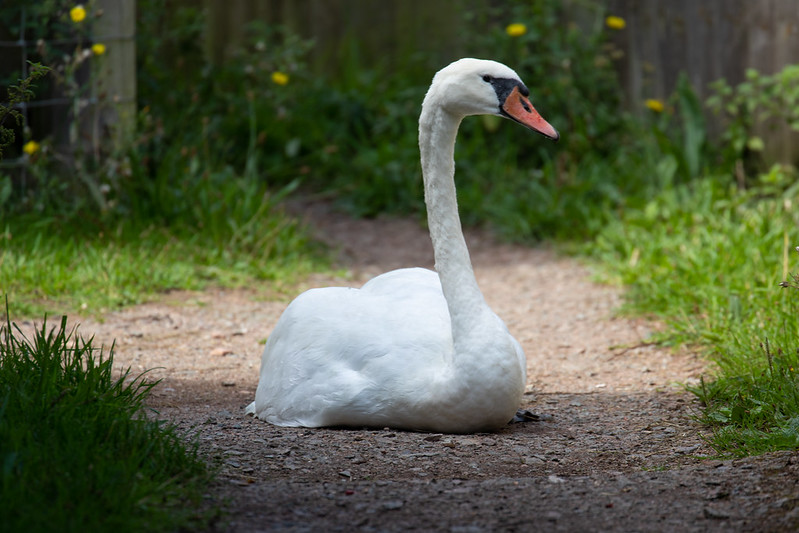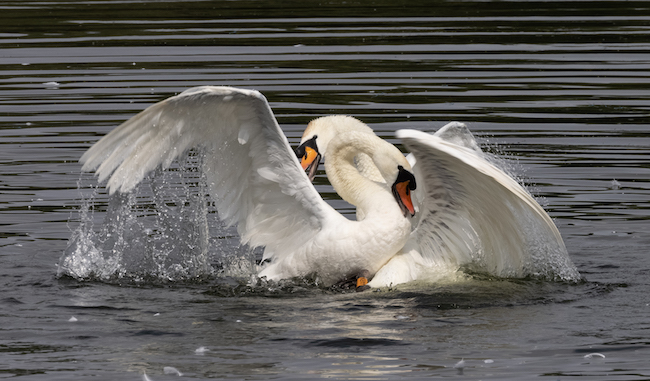- Home
- Identifying birds
- Common Chiffchaff
Listening for the Common Chiffchaff
There’s a moment in early spring when the world is quiet. Buds are waiting. Mornings carry that edge of cold.
And then—from somewhere in the trees—a sound breaks through.
It’s not loud. Not showy. But something has shifted.
If you’ve heard the call of the common chiffchaff, you’ll know that moment. And if you haven’t, this might be the year.
The Song of the Chiffchaff
Some birds slip by unnoticed.
The chiffchaff is one of them. Olive-brown above, pale underneath, with just the faintest light stripe above the eye.
But when it sings?
Everything changes.
The first chiffchaff song of the year feels like a message meant just for you. A two-note phrase - chiff-chaff, chiff-chaff - repeated over and over, cutting through the hush that late winter leaves behind.
It’s often the first migrant I hear. Some years as early as February. I’ve started noticing it sooner than I used to. That first chiffchaff! in the journal, inching forward with each passing spring.
It’s personal, yes. But it’s also part of something bigger.
These early arrivals hint at a world in flux. Chiffchaffs are quiet messengers—marking the ways migration is shifting with the warming seasons.
It’s not just a song.
It’s a sign.
A greeting.
A gentle declaration: spring is starting again.
And once they arrive, they get to work.
🌿 Beginner’s Listening Tip Box
How to Hear Your First Chiffchaff
- Go early. Mornings are best, especially in March and April.
- Choose a quiet green space. Try a woodland edge, a park, or even a leafy hedge.
- Stand still. Let the birds—and your ears—settle in.
- Listen for rhythm. The Chiffchaff’s call is steady and simple: chiff-chaff, chiff-chaff, like a tiny metronome.
- Be patient. You might not hear it right away. That’s okay. Your ears are learning too.
You don’t need to see the bird.
Just start with the sound.
🎧 Listen to the song of the common chiffchaff — steady, simple, unmistakable.
You’ll also hear my footsteps, a breath or two, and another sound in the distance.
A mammal calling now and then. I know what it was… but do you?
A Song with Purpose
The chiffchaff’s song might sound plain. But it’s finely tuned for a purpose.
In early spring, the males sing almost non-stop—especially when they first arrive and start claiming their territory.
That simple, two-note rhythm carries well. It threads its way through branches and brush, across hedgerows and woodland edges. Perched up high, each song does two things at once: it draws in a mate and keeps rivals at bay.
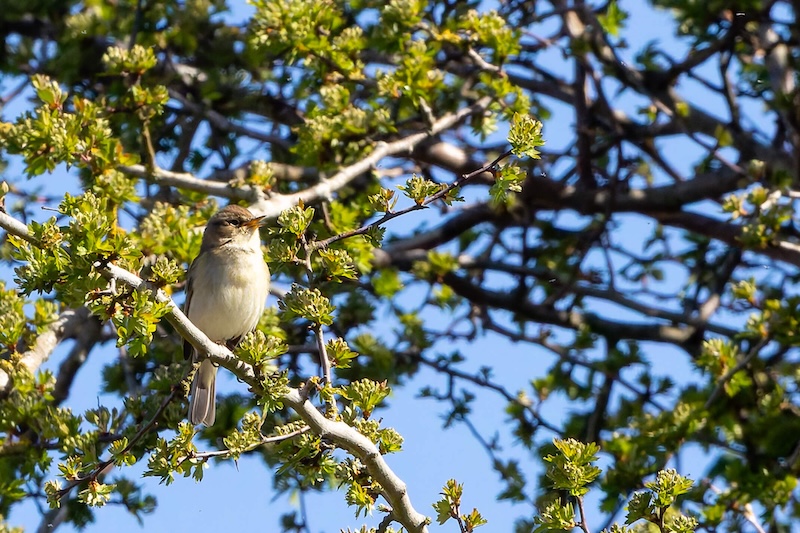 Common Chiffchaff singing from a high perch in early April sunlight
Common Chiffchaff singing from a high perch in early April sunlightAs the season settles, so do the singers. Neighbours begin to recognise one another’s voices. Boundaries are established. The constant tension softens. The songs keep coming, but there’s a shift - less challenge, more conversation.
And something lovely happens on our side, too.
If you walk the same path often enough, your ears start to learn the landscape.
Not just a bird in the hedge—but that bird.
The one who always calls from the hawthorn by the bend.
The one who starts a little earlier than the others.
Now and then, the calm slips.
When a rival pushes too close, the resident might follow - shadowing him through the trees, tightening his song, slipping in a sharp “trrt-trrt” at the end of a phrase.
It’s not quite a fight. Chiffchaffs rarely come to blows.
But that raspy note?
That’s a line drawn: I mean it this time.
Courtship, Connection, and Care
As spring deepens, something in the chiffchaff’s song begins to shift.
In those early weeks—March into April—the singing is constant. Especially at dawn. It fills the air with a kind of urgency.
But as mates are found and nests begin to take shape, that urgency softens.
The female doesn’t sing. She listens. She decides.
And once she chooses, the male’s song changes again. He sings less when she’s close. More when she’s just out of sight.
A quiet form of care. A vocal tether. A way of staying connected, even across a stretch of leaves.
Later still, once she’s on the nest, the volume rises again. Not for her now - but for the neighbours. For the boundaries. For the reminder: this space is spoken for.
It’s easy to miss, if you’re only passing through.
But if you pause… really listen… It’s all there, wrapped into those two small notes.
Calls, Not Just Song
Chiffchaffs don’t only sing.
There’s another voice they use—the soft hweet you might catch from a nearby hedge.
These gentle calls are how they stay in touch throughout the day. A kind of quiet companionship.
They become especially important outside the breeding season. When the singing stops, these calls carry on - keeping contact as birds forage or move through winter thickets.
Sometimes, that faint hweet is the only sign a chiffchaff is nearby.
But when danger comes close, the tone changes completely.
A sudden movement - a predator overhead, or someone wandering too near the nest - can set off a burst of sharp tek-tek or tret calls. Short, urgent notes designed to startle. To warn.
It’s not a wide vocabulary. But every sound earns its place.
Small, yes. But full of meaning.
🎵 Chiffchaff or Willow Warbler?
They look almost identical—olive-green above, pale below, with a faint eyestripe and slender build. Even experienced birders can find them tricky to tell apart by sight alone.
But their songs are wonderfully distinct:
- Chiffchaff: A steady, two-note rhythm — chiff-chaff, chiff-chaff. Repetitive, even, and metronomic.
- Willow Warbler: A softer, more melodic phrase — a gentle, descending cascade that sounds almost wistful.
When in doubt, listen. Their voices are the clearest clue. If you only learn one thing to tell them apart, let it be their song.
🎧 Try listening to recordings of both — it helps more than any field guide ever could.
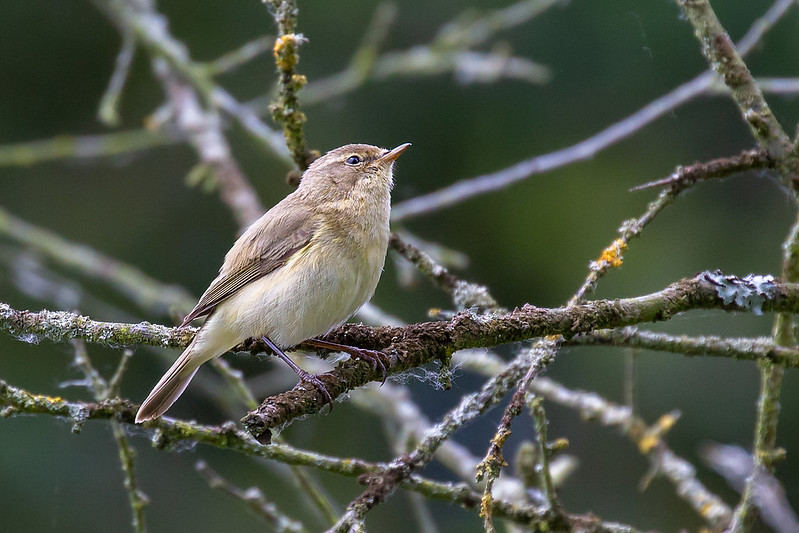
Common Chiffchaff — compact and alert, with plain olive-brown plumage and dark legs. Often found in bare branches early in the season.
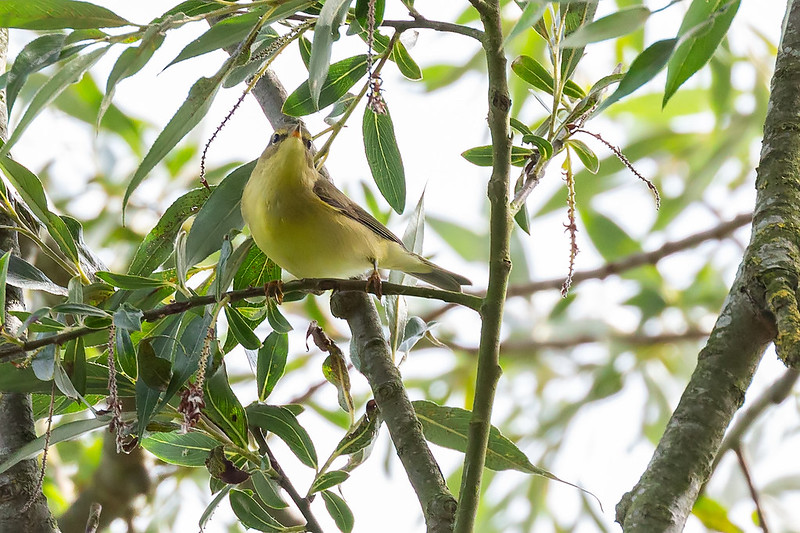
Willow Warbler — slightly yellower and more delicate-looking, with pale legs and longer wings. Often seen in leafy canopies in spring.
🛠️ Curious to learn more?
Staying Through Winter
In years past, chiffchaffs would vanish from most of the UK come winter. Their song, their presence, gone with the colder winds.
But that’s beginning to change.
Milder winters mean more are staying, especially in the south. They keep a low profile then, moving quietly, feeding where they can. You might not notice them at all.
But every now and then, one sings.
On a bright January morning, sunlight catching bare branches, I’ve heard it— that unmistakable rhythm: chiff-chaff… chiff-chaff…
A flicker of spring, right in the middle of winter.
It doesn’t last.
But it’s a reminder—of how finely tuned these birds are to warmth and light. And how closely they live alongside the seasons, even as those seasons shift beneath our feet.
🦌 If you recognised the background call in the audio — well done. It was a muntjac deer barking.
A Sign of Shifting Seasons
I’ve noticed it on my own patch—how that first chiffchaff call keeps edging earlier.
Once, it was a mid-March marker. A sound I could count on, neatly noted in the journal.
Now, it often lands in late February. Sometimes even earlier.
And it’s not just me.
Citizen science projects like Nature’s Calendar are seeing the same shift. Chiffchaffs, on average, are arriving more than ten days earlier than they did a few decades ago.
A stretch of warm weather can bring early song. A sudden cold snap, like the Beast from the East in 2018, can silence everything. That year, some places didn’t hear a chiffchaff until April.
But the long-term pattern is hard to miss.
These shifts might seem small. A few days here, a week there. But they carry weight.
Because when a chiffchaff sings earlier, it’s not just the bird responding.
It’s the trees. The insects. The rhythm of the season itself.
🛠️ What else to look for...
A Song That Still Finds Us
The chiffchaff won’t turn heads with its plumage. And its song won’t win prizes for melody.
But that’s part of the beauty.
Because when you hear it—clear, simple, steady—it feels like something ancient is unfolding. Something hopeful.
Whether it’s your first chiffchaff or your fiftieth, it still lands with meaning.
So if you can, step outside one morning soon. Pause by a hedge. Or at the edge of a wood. And listen.
You might just hear it—
chiff-chaff… chiff-chaff…
—and know that something familiar, and quietly joyful, has begun again.
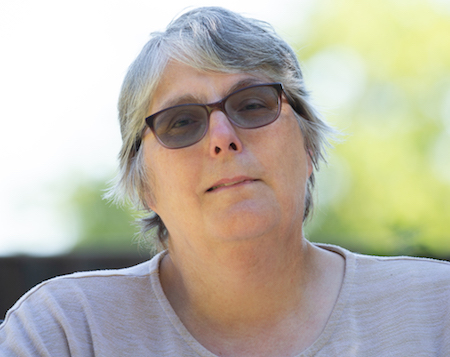
About the Author
Carol is a UK-based wildlife photographer and nature writer with a passion for peaceful walks, patient observation, and capturing life’s quiet wonders.
Through her lens and words, she shares the stories of the natural world — from bluebells and butterflies to birds like the great crested grebe.
Get closer to UK nature
Subscribe to Wild Lens!
Want to discover more hidden walks and wildlife moments?
I’d love to share my latest nature finds, photo tips, and peaceful walk recommendations with you.
💌 Join my newsletter Wild Lens—it’s free, occasional, and always rooted in a love of the natural world.
Subscribe below and come exploring with me.



